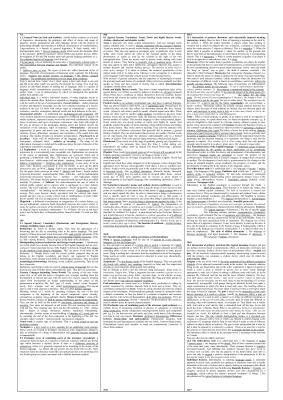РУДН, ИИЯ, 2009
General Notes on Style and Stylistics
Euphemism
Special Literary Vocabulary (Barbarisms and Foreignisms, literary coinages including nonce-words)
Particular ways of combining parts of the utterance (Asyndeton)
Special Literary Vocabulary Terms (Poetic and highly literary words. Archaic, obsolescent and obsolete words)
Syntactical expressive means and stylistic devices (antithesis)
Special colloquial vocabulary (slang, jarsonisms, professionalisms)
Particular ways of combining parts of the utterance (polysyndeton)
Interaction of primary dictionary and contextually imposed meaning (metonymy, irony)
Functional styles of the English language
Interaction of primary and derivative logical meanings. Zeugma and pun
The belles-lettres style
Expressive means (EMs) and Stylistic Devices (SDs)
Peculiar Use of Set-Expressions
Special colloquial vocabulary (dialectal words, vulgarisms, colloquial coinages including nonce-words)
Particular ways of combining parts of the utterance (gap-sentence link)
Lexical expressive means and stylistic devices
Particular use of colloquial constructions (question-in-the-narrative, represented speech)
Interaction of logical and emotive meanings (Interjections and exclamatory words)
Publicists style
Interaction of logical and emotive meanings (epithet, oxymoron)
Newspaper slyle
Meaning from stylistics point of view. Types of meaning (logical, emotive, nominal)
Syntactical expressive means and stylistic devices (Supra-phrasal units, Paragraph)
Varieties of language
Peculiar use of set expressions (quotation, allusion)
Phonetic expressive means and stylistic devices
Particular use of colloquial constructions (ellipsis, break-in-the-narrative)
Interaction of logical and nominal meanings (Antonomasia)
Scientific prose style
Intensification of a certain feature of a thins or phenomenon (Simile, Periphrasis)
The style of official documents
Stylistic classification of the English vocabulary (general consideration)
Syntactical expressive means and stylistic devices (inversion, detached construction)
Neutral and Common Literary Vocabulary
Syntactical expressive means and stylistic devices (parallel construction, chiasmus, repetition)
Interaction of primary dictionary and contextually imposed meaning (metaphor)
Stylistic use of structural meanings (rhetorical question, litotes)
Neutral and common colloquial vocabulary
Syntactical expressive means and stylistic devices (enumeration, suspense, climax)
General Notes on Style and Stylistics
Euphemism
Special Literary Vocabulary (Barbarisms and Foreignisms, literary coinages including nonce-words)
Particular ways of combining parts of the utterance (Asyndeton)
Special Literary Vocabulary Terms (Poetic and highly literary words. Archaic, obsolescent and obsolete words)
Syntactical expressive means and stylistic devices (antithesis)
Special colloquial vocabulary (slang, jarsonisms, professionalisms)
Particular ways of combining parts of the utterance (polysyndeton)
Interaction of primary dictionary and contextually imposed meaning (metonymy, irony)
Functional styles of the English language
Interaction of primary and derivative logical meanings. Zeugma and pun
The belles-lettres style
Expressive means (EMs) and Stylistic Devices (SDs)
Peculiar Use of Set-Expressions
Special colloquial vocabulary (dialectal words, vulgarisms, colloquial coinages including nonce-words)
Particular ways of combining parts of the utterance (gap-sentence link)
Lexical expressive means and stylistic devices
Particular use of colloquial constructions (question-in-the-narrative, represented speech)
Interaction of logical and emotive meanings (Interjections and exclamatory words)
Publicists style
Interaction of logical and emotive meanings (epithet, oxymoron)
Newspaper slyle
Meaning from stylistics point of view. Types of meaning (logical, emotive, nominal)
Syntactical expressive means and stylistic devices (Supra-phrasal units, Paragraph)
Varieties of language
Peculiar use of set expressions (quotation, allusion)
Phonetic expressive means and stylistic devices
Particular use of colloquial constructions (ellipsis, break-in-the-narrative)
Interaction of logical and nominal meanings (Antonomasia)
Scientific prose style
Intensification of a certain feature of a thins or phenomenon (Simile, Periphrasis)
The style of official documents
Stylistic classification of the English vocabulary (general consideration)
Syntactical expressive means and stylistic devices (inversion, detached construction)
Neutral and Common Literary Vocabulary
Syntactical expressive means and stylistic devices (parallel construction, chiasmus, repetition)
Interaction of primary dictionary and contextually imposed meaning (metaphor)
Stylistic use of structural meanings (rhetorical question, litotes)
Neutral and common colloquial vocabulary
Syntactical expressive means and stylistic devices (enumeration, suspense, climax)

